Teresa González Díez
In recent times, white coloured stones have become fashionable. One of the types of stone that offer a purer white colour are limestones. White limestone is a sedimentary rock composed mainly of calcium carbonate plus a minimum percentage of impurities. The greater or lesser presence of minerals and fossils is what causes the shades of other tones such as cream or grey. The lower this proportion, the whiter the limestone will be.
In Spain there are four of the most representative limestones in terms of quality and quantity of production in which the predominant colour is white.
PIEDRA PALOMA
Known worldwide by this name, it is also known as Caliza Blanca Paloma and Caliza Nevada.
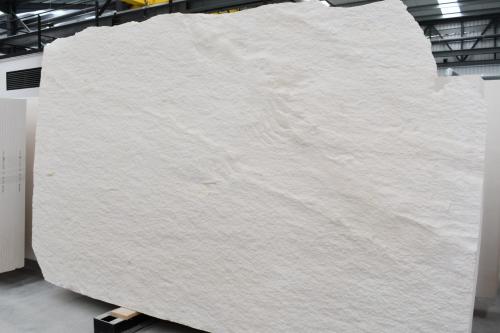
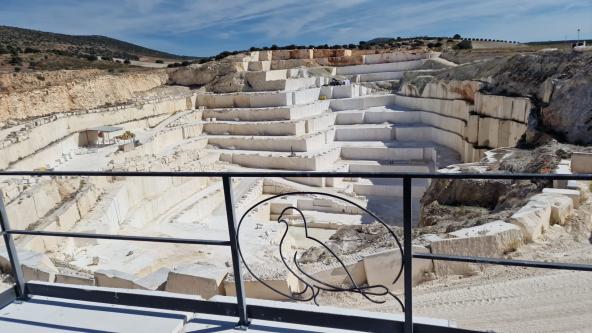
The quarry of the Piedra Paloma limestone comes from Matagallar in the municipality of Pedrera, Seville and is owned by the Segura family, of the Piedra Paloma company. Its extraction is about 900 to 1,000 m3/month and production remains stable. Most of the companies dedicated to the production of this material are located in Andalusia, especially in Malaga and Seville.
Its main market is the Spanish market, but it is also exported to a large number of countries such as France, the USA and South Korea.
It is the limestone with the whitest tone of the four as it is mainly composed of 99% calcite and 1% of other materials such as oxide and quartz, which makes it very uniform and neutral in colour. Piedra Paloma is a highly resistant material, so it can be used both outdoors, for flooring, facades and external decorative elements, as well as for any indoor application: fireplaces, tables, stairs, counters, etc.
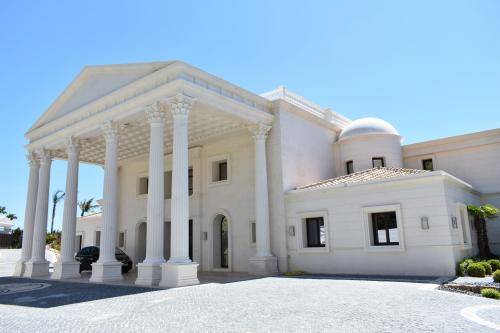
Piedra Paloma limestone can be finished in many different ways: honed, polished, aged and with different textures.
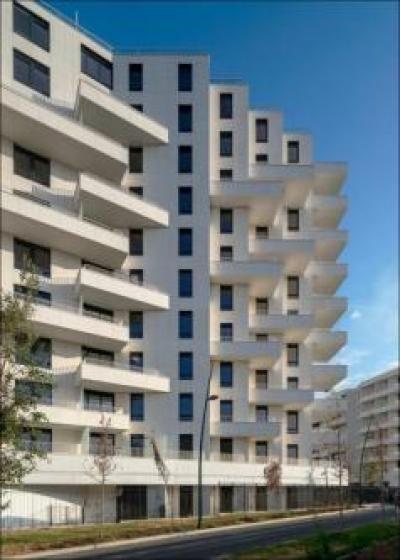
Emblematic projects in Piedra Paloma
Piedra Paloma is a material highly appreciated by architects. This is reflected in the large number of large buildings all over the world in which Piedra Paloma has been used, such as the Antequera Courts, the large Clichy Roguet building in Paris or the Sannois Town Hall in France, as well as in the decoration of shops of large firms such as Dior in Madrid or Uniqlo in Paris.
The company Inditex has used the quarries of Piedra Paloma to promote some of its collections for its international clothing brand Zara.
ALBA LIMESTONE
This limestone has a colour called ‘broken’ white because, unlike pure white, it has a more neutral and soft tone due to the presence of other tonalities such as grey, due to the presence of marine fossils. It is composed of 98.5% calcium carbonate, it is uniform, without veins or pores and without shine, i.e. matt. It has the particularity of being a good thermal and acoustic insulator and quite resistant.
The Alba Limestone quarries are located in the province of Murcia. Those of the company Transforstone or Caliza Alba, in Caravaca de la Cruz, have a minimum production of about 800 m3 per month. Other quarries, such as that of the company Mármoles Seller, are located in the town of El Sabinar.
Apart from the Spanish market, it is exported to many different countries, notably the USA, China, Korea and Mexico. It is sold in blocks, slabs and slabs of different sizes, depending on the application.
It can be honed, aged, bush-hammered, sandblasted and sandblasted.

Photo: TRANSFORSTONE

Photo: CANU
It is resistant and therefore very suitable for flooring, cladding and exterior and interior façades. It can also be seen in street furniture, tables and deckchairs for swimming pools and spas. Its use in swimming pool borders is also very appreciated because it does not absorb heat, it is non-slip and pleasant to the touch.
CAPRI LIMESTONE
White matt limestone with fine dark grey or beige dots, also due to the presence of fossils. Its texture is fine and its background is uniform. The quarries are located between the provinces of Murcia and Alicante.
It is a very popular stone in Spain, but it also enjoys international prestige and is used both outdoors and indoors, mainly for cladding, paving, flooring, façades and pool surrounds. It can also be found in urban and garden furniture, balustrades, columns, window sills, etc.
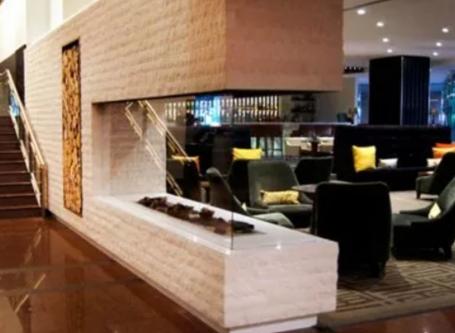
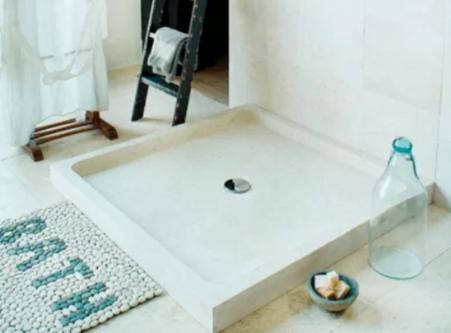
Photos: CANU
Like other limestones and due to its natural porosity, it is non-slip, very resistant to weathering and does not absorb heat. The most commonly used finish is honed, which highlights its beauty, as well as brushed and aged.
The price of the Caliza Capri is mid-range, which makes it very popular and appreciated for its quality-price ratio when choosing a premium limestone for an architectural or decorative project.
CAMPASPERO LIMESTONE
The Campaspero stone or Campaspero limestone has been used in historical and artistic heritage for more than five centuries in the province of Valladolid. It is a white limestone, fine-grained, with few fossils, occasional grey clouds and the appearance of cracks of up to 2 or 3 mm. No subvarieties can be distinguished and the Campaspero limestone varies from white to greyish with important changes and nuances.
Castle of Peñafiel (Valladolid, Spain) built between the 10th and 15th centuries with Campaspero stone.
Photo: Teresa González Díez
There are currently four companies with quarries, all in the municipality of Campaspero in the province of Valladolid, which together produce an average of 5 000 m3 per year of blocks and semi-blocks for weaving and stone slabs, block-cutting discs and by-products such as masonry and other products.
The main market for Campaspero stone in Spain is Madrid, because of its similarity to the stone from Colmenar de Oreja, which currently has no mining reserves, as well as its natural market in Valladolid, Castile-Leon and neighbouring areas. In the last ten years this stone has been sold with great intensity in the French Aquitaine and other European regions with similar stone heritage.
The expectations for Campaspero stone are to maintain the supply of the existing demand. Some companies have disappeared and the remaining ones only sell processed material with high quality controls.
Campaspero limestone, being a geologically young sedimentary rock, is characterised by anarchic shifts of white and grey tones. It has been used historically in façades and stonework and it is not recommended for use on floors in areas where the continuous presence of cold weather makes it necessary to use salt or brine and other similar elements for road safety.
Piedras Campaspero S A and Marmolera Vallisoletana S A are the main companies that work this stone and offer the following surface finishes: disc cut or loom cut, honed, polished, aged and fine or fine-medium bush-hammered. The most common is honed. The most demanded method for interior flooring is the antiquing with a specific brushing. Bush-hammered is the traditional method for interior flooring that involves the passage of personnel in damp situations. Rustic honing is no longer done except for specific architectural design, as it is worked by hand.
Photos: ARINOR
Campaspero limestone is mainly used in internal and external architectural cladding, as well as in the elaboration of columns and pieces of traditional stonework and masonry.
NOTE: We would like to thank Aurelio de Grado (PINACAL) and Marisa Segura (PIEDRA PALOMA) for their collaboration in the preparation of this article.
